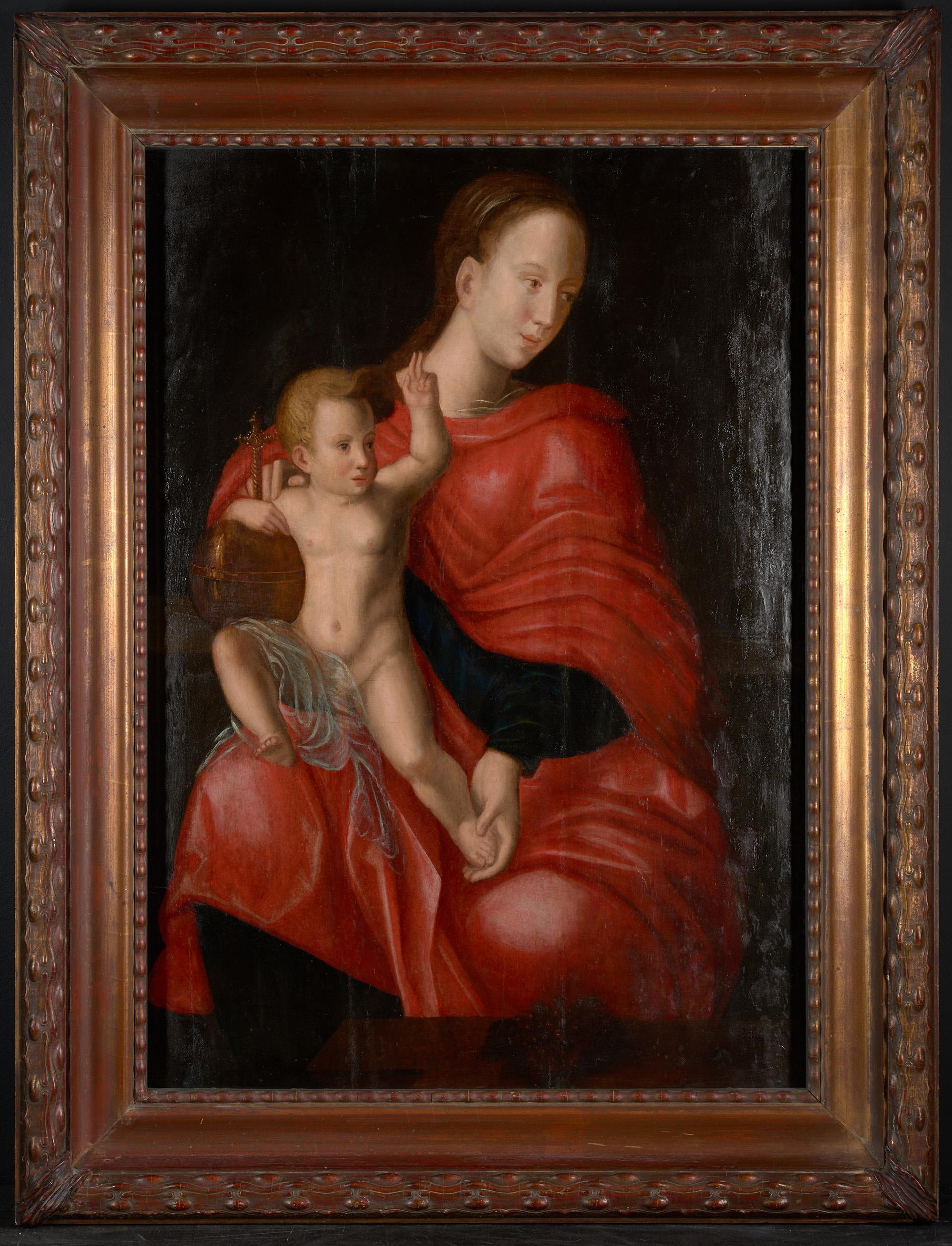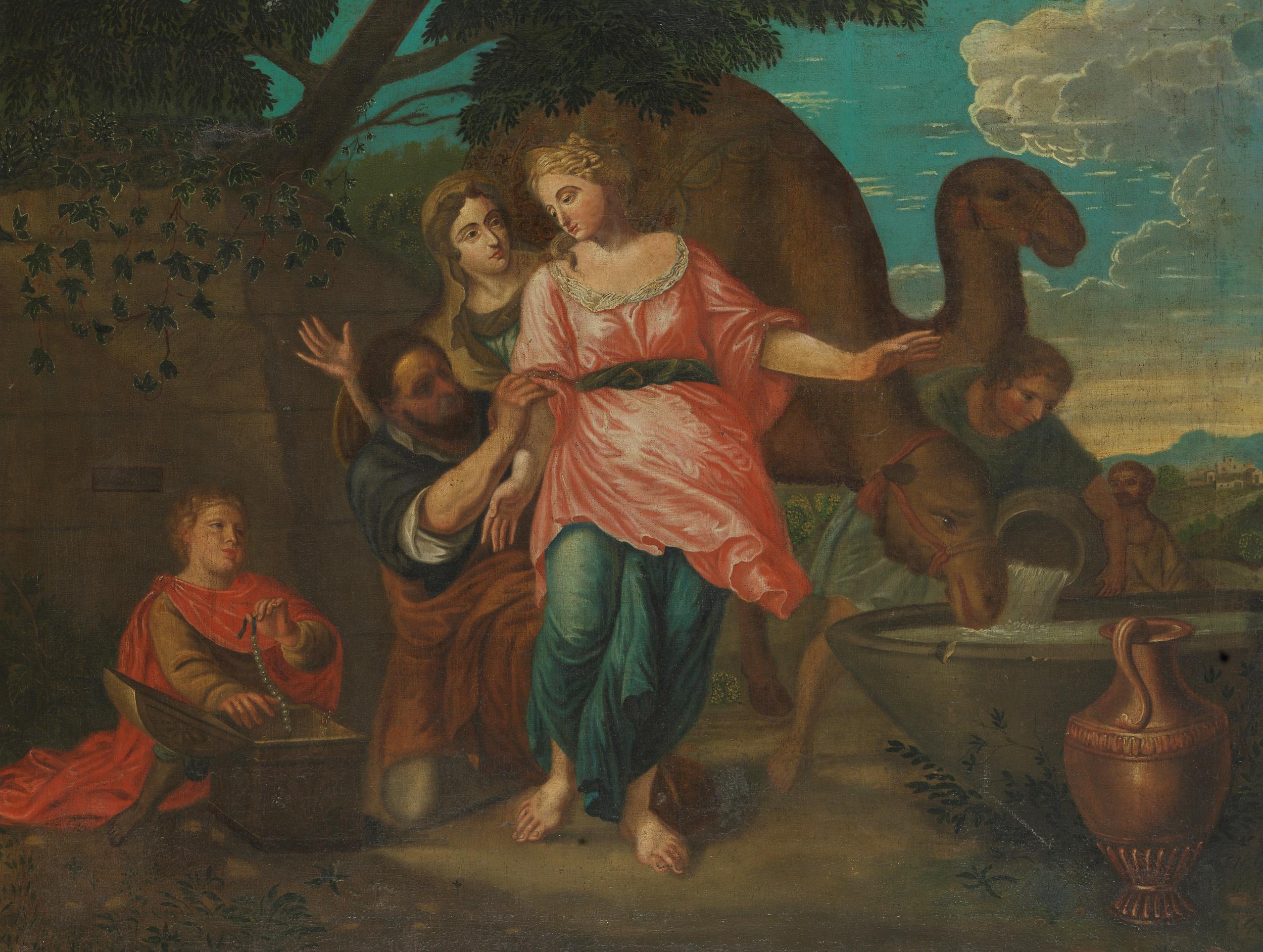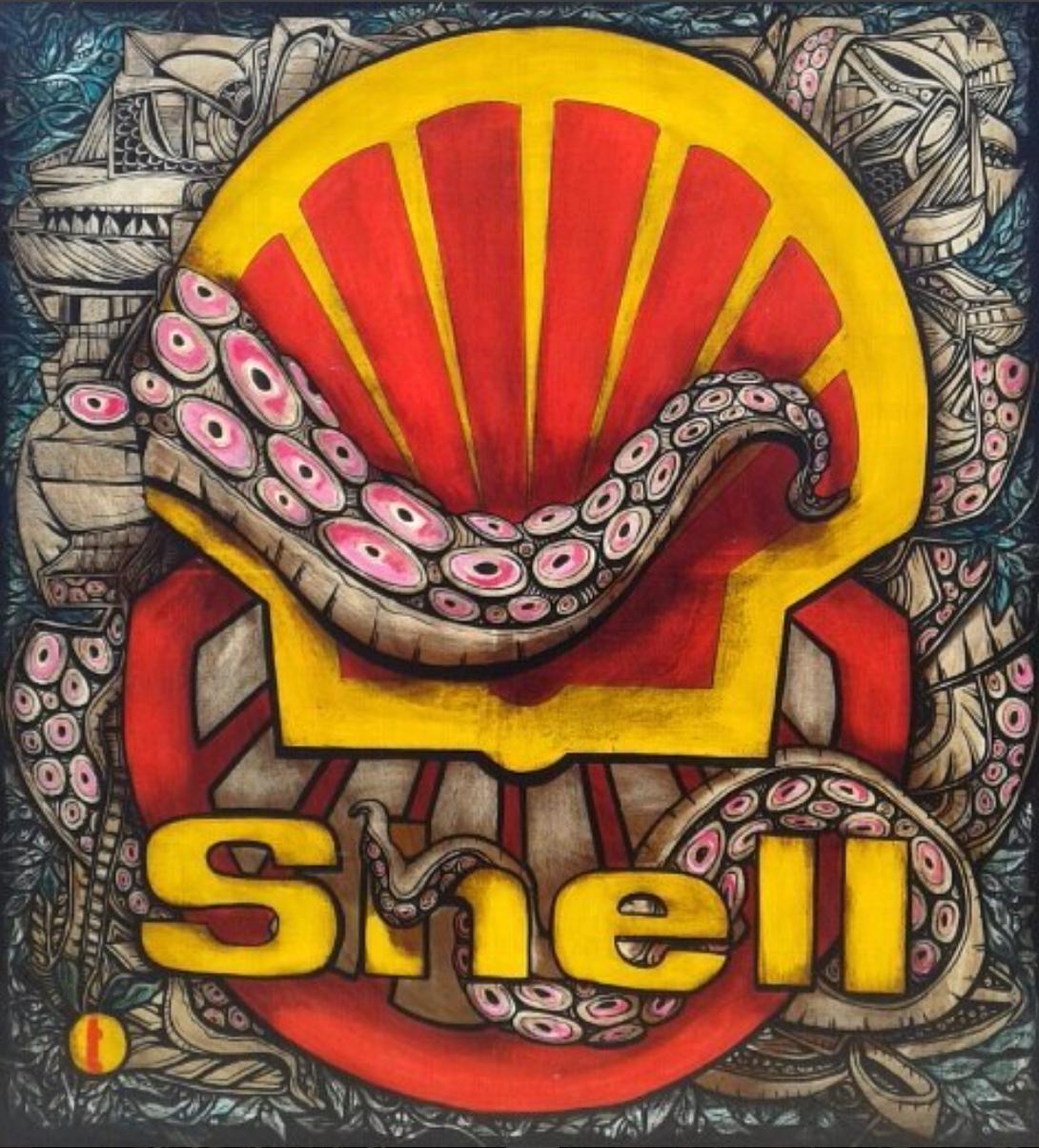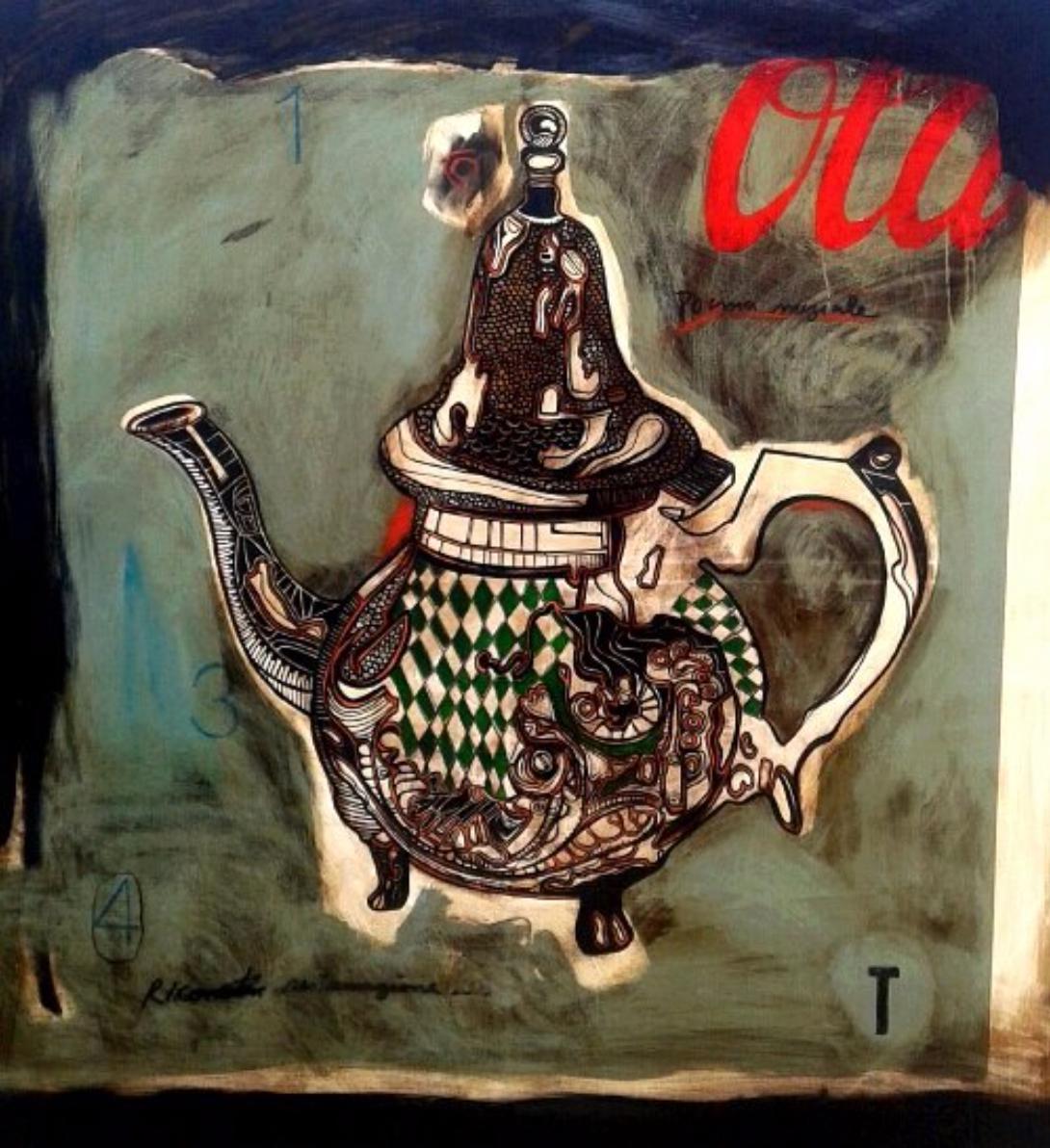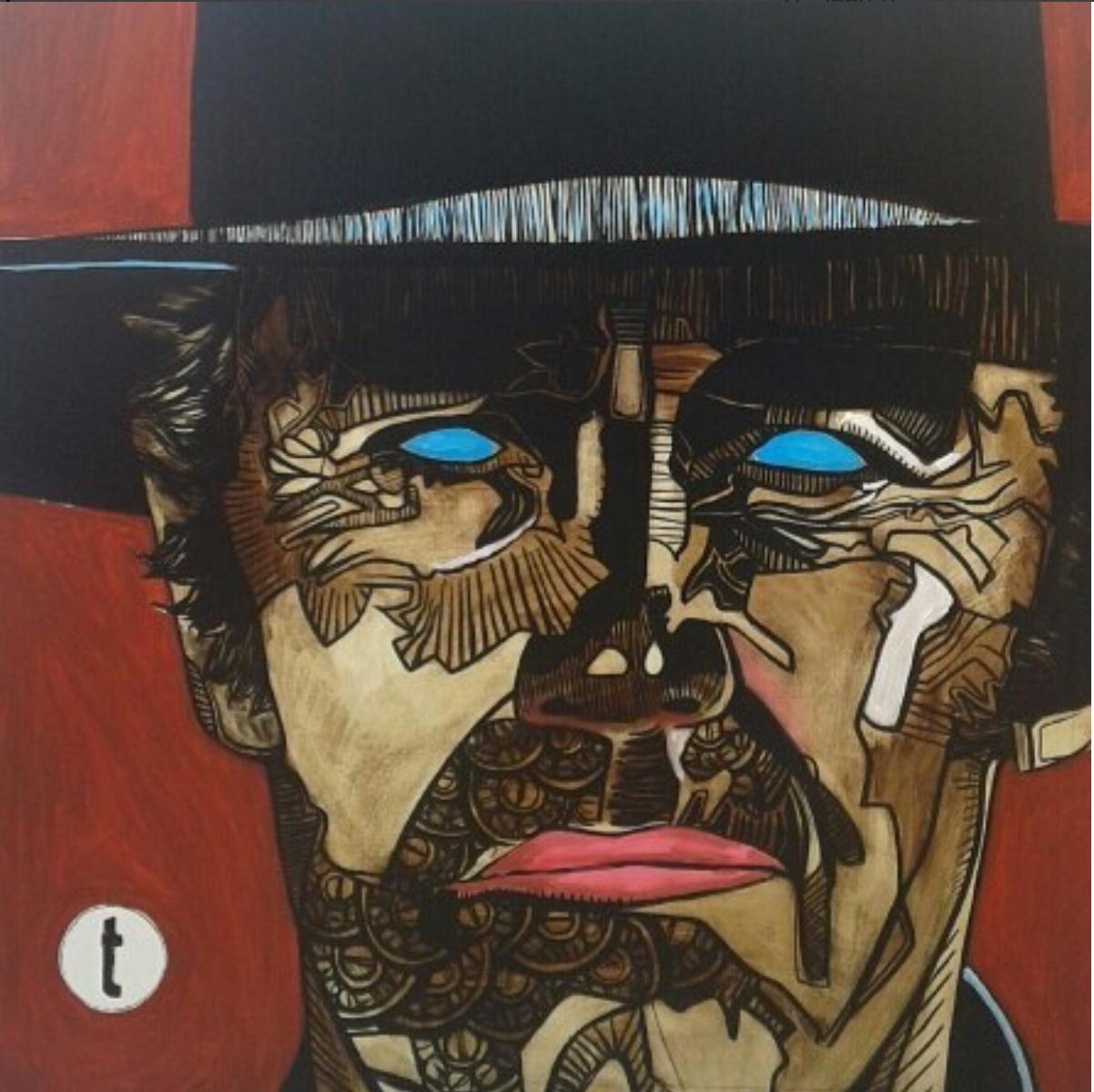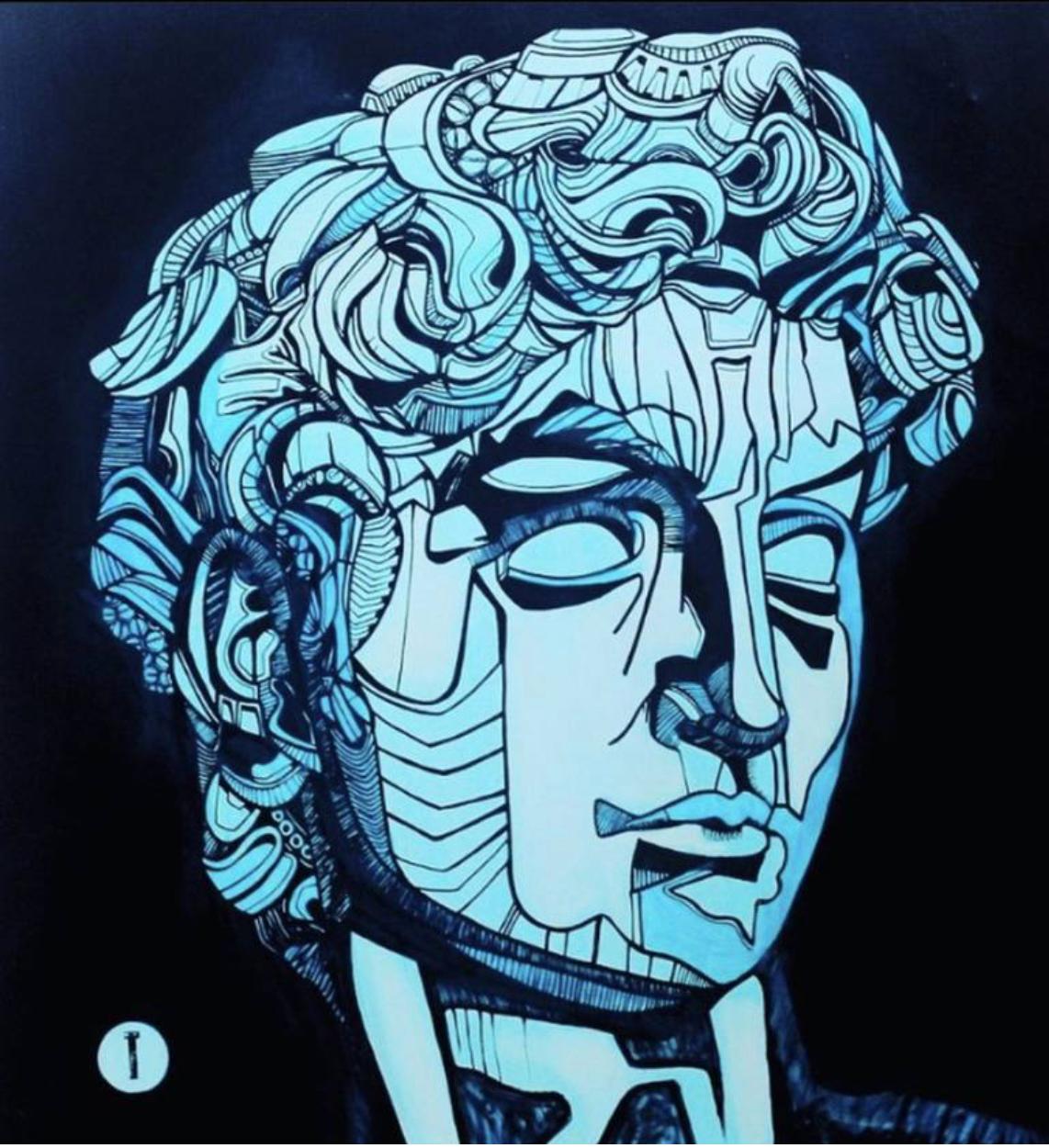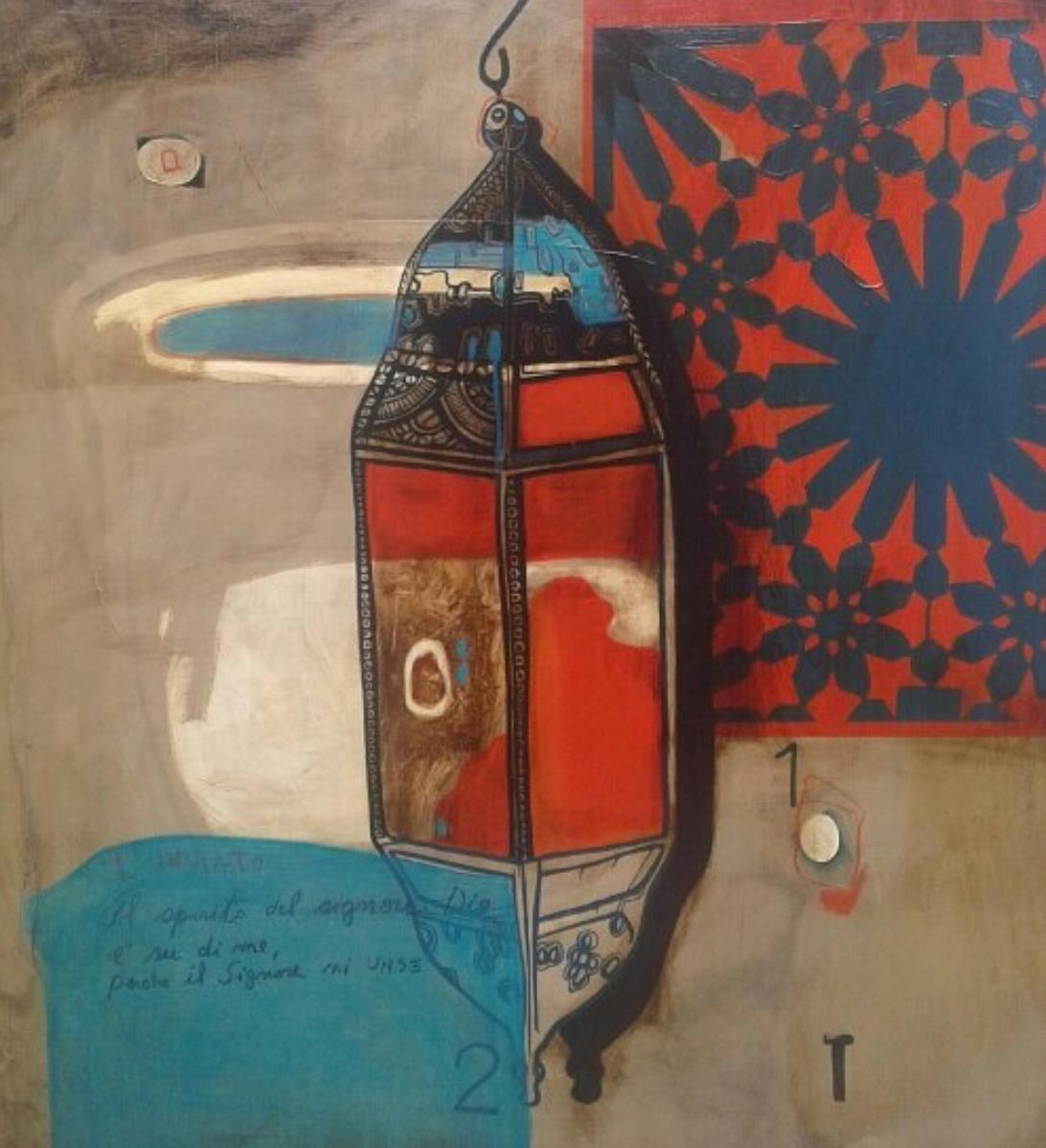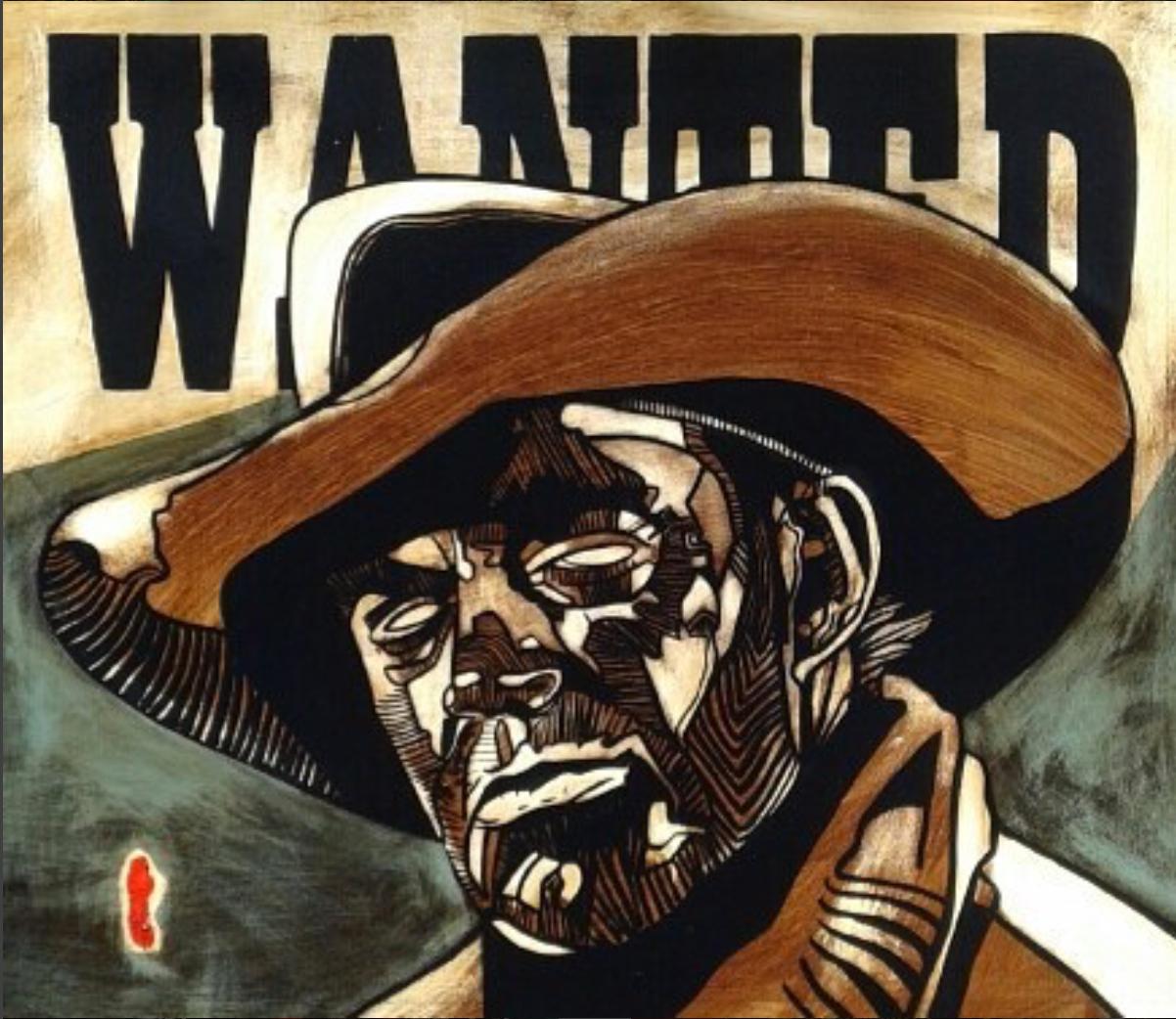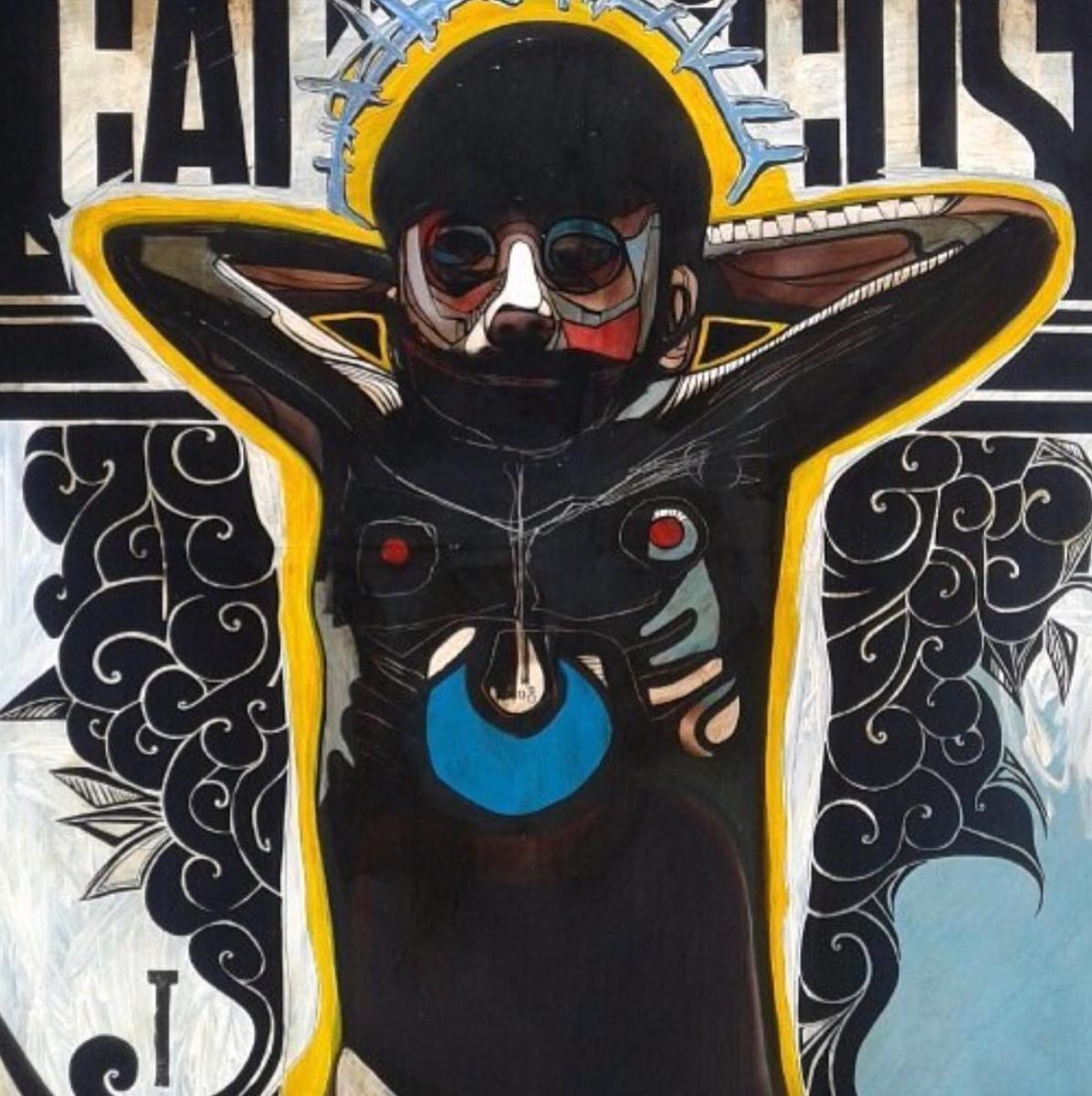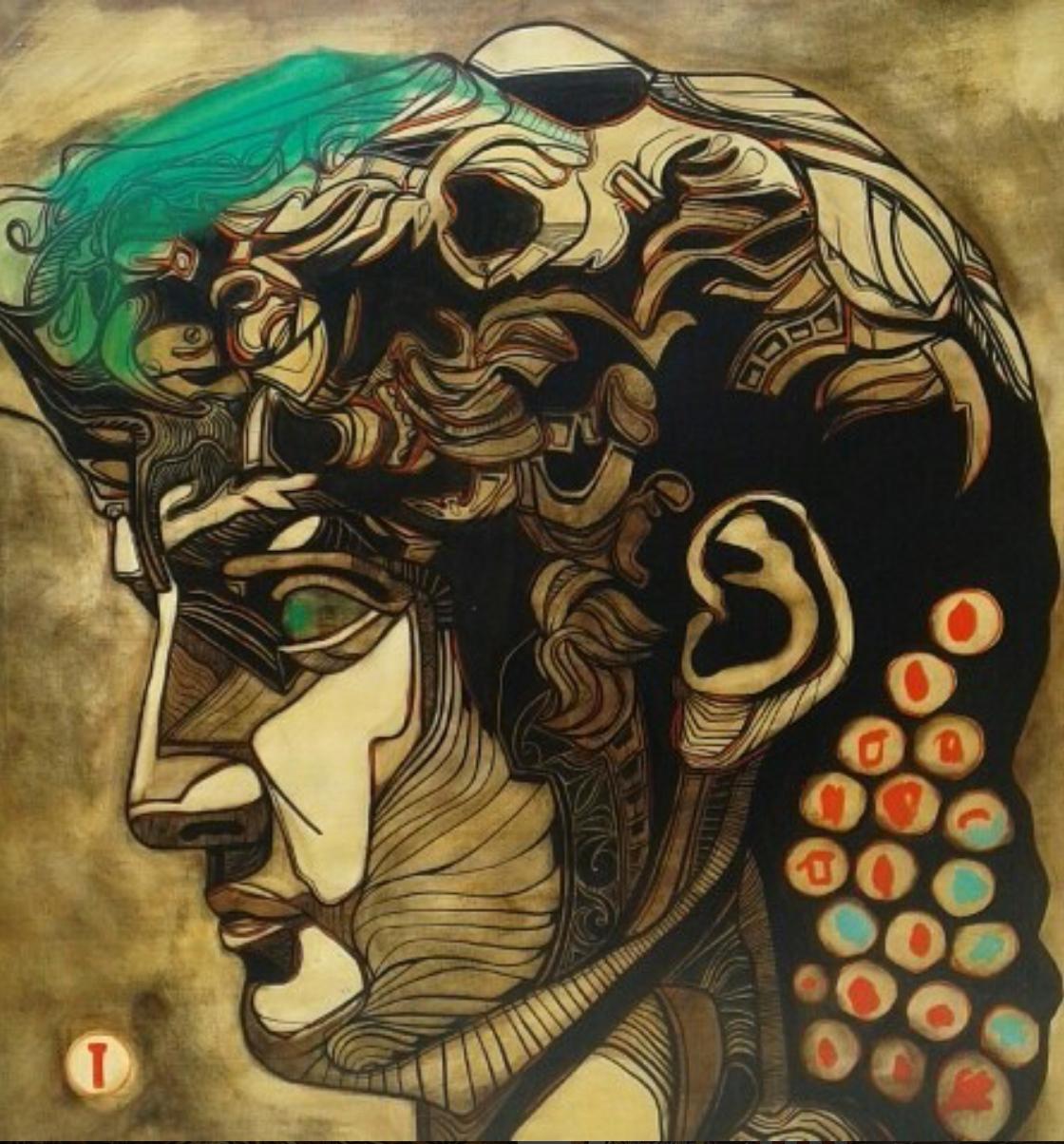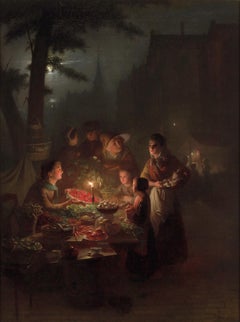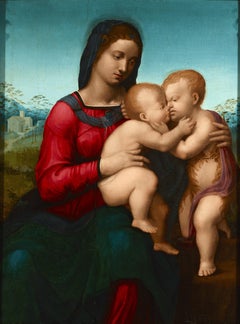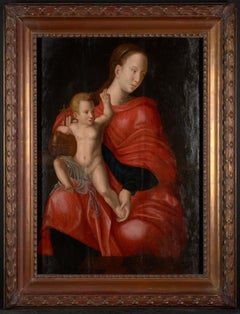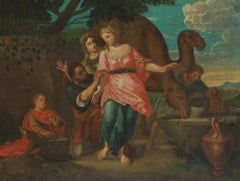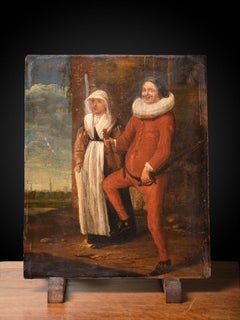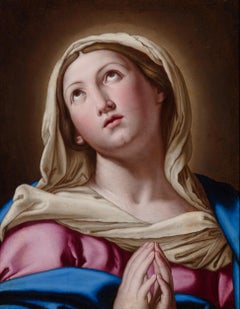
Madonna in Ecstasy
View Similar Items
Want more images or videos?
Request additional images or videos from the seller
1 of 8
Giovanni Battista Salvi da SassoferratoMadonna in EcstasyMid-17th Century
Mid-17th Century
About the Item
- Creator:Giovanni Battista Salvi da Sassoferrato (1609 - 1685, Italian)
- Creation Year:Mid-17th Century
- Dimensions:Height: 27.5 in (69.85 cm)Width: 23.5 in (59.69 cm)Depth: 2 in (5.08 cm)
- Medium:
- Movement & Style:
- Period:Mid-17th Century
- Condition:
- Gallery Location:New Orleans, LA
- Reference Number:Seller: 30-70411stDibs: LU1864197882
About the Seller
5.0
Vetted Seller
These experienced sellers undergo a comprehensive evaluation by our team of in-house experts.
Established in 1912
1stDibs seller since 2013
13 sales on 1stDibs
Typical response time: 4 hours
More From This SellerView All
- Abundance by Johannes RosierseLocated in New Orleans, LAJohannes Rosierse 1818 – 1901 | Netherlands Abundance Signed “J. Rosierse” (lower right) Oil on canvas Captivating and mysterious, this dynamic painting by Johannes Rosierse demon...Category
19th Century Baroque Figurative Paintings
MaterialsCanvas, Oil
- Madonna Addolorata By SassoferratoBy Giovanni Battista Salvi da SassoferratoLocated in New Orleans, LASassoferrato (Giovanni Battista Salvi) 1609-1685 Italian Madonna Addolorata Oil on canvas Celebrated Italian artist Sassoferrato and his moving religious imagery are the epitome ...Category
17th Century Baroque Figurative Paintings
MaterialsCanvas, Oil
- Virgin and Child with the Infant Saint JohnBy Domenico PuligoLocated in New Orleans, LAA masterful example of Italian Mannerist painting, this exceptional panel was composed by the renowned Florentine painter Domenico Puligo. Alongside Jacopo Pontormo and Rosso Fiorentino, Puligo is remembered as one of the foremost figures of the Mannerist movement that rose to prominence during the 16th century in Florence. This panel of the Virgin Mary with the Christ child and Saint John the Baptist is a characteristic example of his celebrated devotional images, which grace museums such as the Metropolitan Museum of Art (New York), Museo del Prado (Madrid), Palazzo Borghese (Rome), and Palazzo Pitti (Florence), among many others. Puligo’s skill with color is fully demonstrated in the beautifully preserved work. Considering its age, the vibrancy and the sheer range of color is remarkable. The Virgin Mary’s crimson dress...Category
16th Century Mannerist Portrait Paintings
MaterialsOil, Panel
- Baigneuses (Bathers)By Louis-Joseph CourtatLocated in New Orleans, LAFrench Academic painter Louis-Joseph Courtat displays his mastery of composition and the female form in this entrancing oil on canvas. Entitled Baigneuses, the work was painted for and exhibited at the 1885 Paris Salon, the foremost exhibition of painters in the Western world. Large in size, it captures two nude bathers within a tranquil beach scene. While the artist's skill for landscape painting is on display, it is his command of form, light and color that bring this canvas to life. The artist specialized in paintings that glorified the nude, and his skill is clear in the luminosity of his models' skin and the classical beauty of their form and proportions. With their soft, undulating curves and flowing hair, Courtat's models reflect the two key influences on the young painter, that of the great Jean-Auguste-Dominique Ingres as well as his teacher Alexandre Cabanel. Like these two greats who came before him, Courtat similarly follows in the artistic tradition of the female nude that is traceable to classical antiquity and the Italian Renaissance. Born in Paris in 1847, Courtat studied at the famed École des Beaux-Arts under Cabanel. He was one of the Academic master's first students at the school, where he began to teach in 1864. Displaying considerable skill at an early age, Courtat won the Prix de Rome around 1870, and subsequently studied in Rome for a number of years. He returned to Paris in 1873 to make his debut at the Salon, where he was met with immediate success, receiving a third class medal. He received medals again in 1874 and 1875, a remarkable achievement for a painter of his age. In addition to the monumental nudes...Category
19th Century Academic Nude Paintings
MaterialsCanvas, Oil
Price Upon Request - La Danse pyrrhique (Pyrrhic Dance)By Jean-Léon GérômeLocated in New Orleans, LAThis painting by Jean-Léon Gérôme entitled La Danse pyrrhique is among the most fascinating compositions ever composed by the Academic master’s hand. Gérôme’s iconic scenes of the East captivated a generation, and this work showcases all of the artist’s unparalleled talents. Set in the Ptolemaic period of Ancient Egypt, its depiction of the ritual Pyrrhic dance is vivid and striking. Beautifully painted and rich with detail, it represents the best of Gérôme’s famed Orientalist scenes. In La Danse pyrrhique, Gérôme gives us a dramatic rendering of this ancient war dance. Greek in origin, it was performed by costumed dancers armed with swords who completed a series of movements set to music pantomiming combat. Homer wrote that Achilles performed this dance in a show of respect and grief at the funeral of his friend, Patroclus. When Julius Caesar introduced it to the Roman Games, its popularity spread across the Roman Empire to include Egypt, where Gérôme’s composition is set. Gérôme visited Egypt for the first time in 1856, and he returned throughout the late 19th century when this work was created. Gérôme’s first-hand familiarity with this setting is evident in this piece, and his visual narrative is unlike any other. His paintings combine the rationalist style of historical paintings and the theatrical...Category
19th Century Academic Figurative Paintings
MaterialsCanvas, Oil
Price Upon Request - Young girl from Tetouan, MoroccoBy Charles Zacharie LandelleLocated in New Orleans, LAYoung girl from Tetouan, Morocco Signed (center right) Oil on canvas In this important oil on canvas, French Orientalist painter Charles Landelle captures the engaging visage of a young Moroccan woman in a moment of tranquil contemplation. Seated on the floor of what is almost certainly an opulent riad, the young woman wears an intricately embroidered Moroccan kaftan and headdress. The sumptuous patterns on the floor and in the background lend an additional warmth to the strikingly vivid red hues which dominate the composition and are a hallmark of Landelle’s work. The symbols behind the young woman may represent either the Jewish Star of David or the Islamic Seal...Category
Late 19th Century Academic Figurative Paintings
MaterialsCanvas, Oil
You May Also Like
- 16th C, Biblical, Manner of Joos van Cleve, Madonna with Child, Oil on PanelBy Joos van CleveLocated in brussel, BEAttentive observer, may I challenge you to find some unusual elements in this panel painting? One detail has to do with the symbolic use of color, the other with a later adjustment of the image. Indeed! The Blessed Virgin is not dressed in her usual sky blue cloak, which refers to her purity, but in a red robe. During the Late Middle Ages and early Renaissance, the Virgin often wore such a red garment to refer to the Passion of Christ. After all, the blessing Christ child with his orb would shed his blood for the redemption of mankind. The second strange element catches the eye when one looks closer at the little Jesus. It appears that he was originally depicted completely naked, but got on a transparent loincloth over time. In the past there were several times when nudity in art was subject to some form of censorship. For example, the supervision of Christian art was strongly encouraged by the Council of Trent (1545-1563). This assembly was dealing with the inner-ecclesiastical reform of the Roman Catholic Church. One of the important theologians who followed the council’s guidelines was Joannes Molanus (1533-1585). He did not consider the nakedness of the Christ Child to be edifying and pointed out that children could be endangered in this way. He may have been referring to the dangers of paedophilia. During the 19th century, puritanism emerged. A famous example of a moral preacher was Pope Pius IX...Category
16th Century Baroque Figurative Paintings
MaterialsCanvas, Oil
- 18th C, In the Style of the Classicizing Baroque, Biblical, Rebekka and EliëzerLocated in brussel, BEWillem Muys was a Dutch, 18th-century painter of history pieces, portraits and cabinet pieces. Above all, he appears to have been active as a painter of ‘wallpaper’. Until the mid-18th century, ‘wallpaper’ was not painted on paper but on coarsely woven linen. Wealthy citizens had their mansions or country estates adorned with ‘wallpaper’ with landscapes, exotic birds or chinoiseries. Willem Muys mainly painted ‘wallpaper’, which means that few of his works have been preserved. They are hardly represented in public collections. The works of his sons, Nicolaas en Robbert, both painters, are a little less rare. The painting with Rebecca and Eliezer...Category
18th Century Baroque Figurative Paintings
MaterialsCanvas, Oil
- 17th C painting of a peasant couple preparing for Carnival.Flemish School.Located in brussel, BEPreparation for Carnival: a three day festival of insatiable eating, drinking and carousing that preceded the forty days of Lent, a period of penitence when the pious drank only wate...Category
17th Century Baroque Figurative Paintings
MaterialsOil, Wood Panel
- Monster ShellLocated in New Rochelle, NYDaniel Tavares considers his oil paintings part drawing and part painting. His artwork is a visual synthesis of his life experiences reflecting the influence of comic books - which ...Category
2010s Contemporary More Art
MaterialsOil, Canvas
- Objects nº2Located in New Rochelle, NYDaniel Tavares considers his oil paintings part drawing and part painting. His artwork is a visual synthesis of his life experiences reflecting the influence of comic books - which ...Category
2010s Contemporary More Art
MaterialsCanvas, Oil
- Henry FondaLocated in New Rochelle, NYDaniel Tavares considers his oil paintings part drawing and part painting. His artwork is a visual synthesis of his life experiences reflecting the influence of comic books - which ...Category
2010s Contemporary More Art
MaterialsCanvas, Oil
Recently Viewed
View AllMore Ways To Browse
Reformation Art
Mid Century Virgin Mary
Windsor Castle Painting
Guido Reni Oil Painting
Christ Revealed
Virgin Mary Icon
After Guido Reni
Raphael Porcelain
Porcelain Virgin
Piety Painting
Raphael Mary
Battista Salvi
Battista Sassoferrato
Giovanni Battista Salvi
Hindu Art
Retro Cafe Signs
Framed Oil Painting Vienna
Da Style
